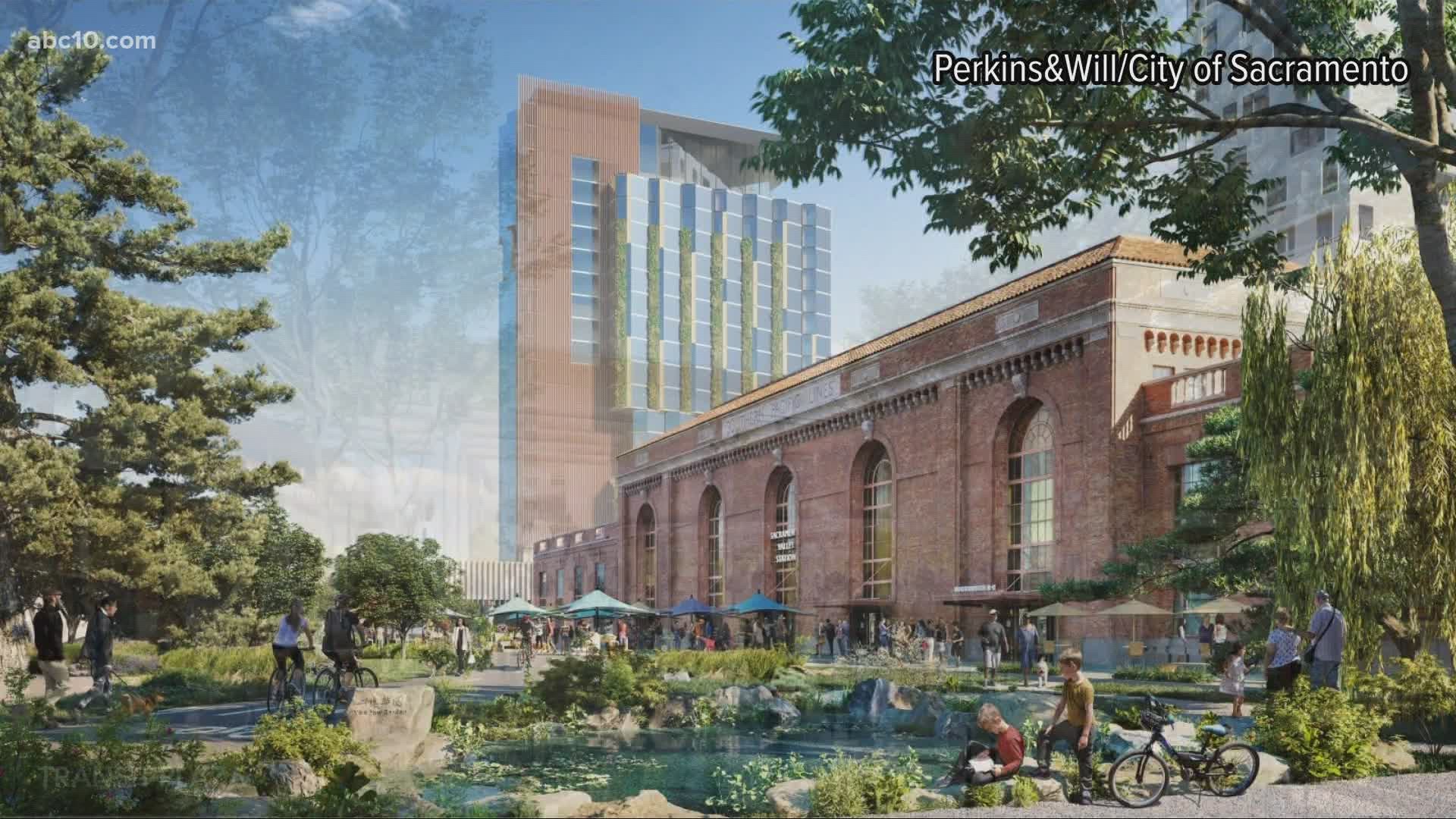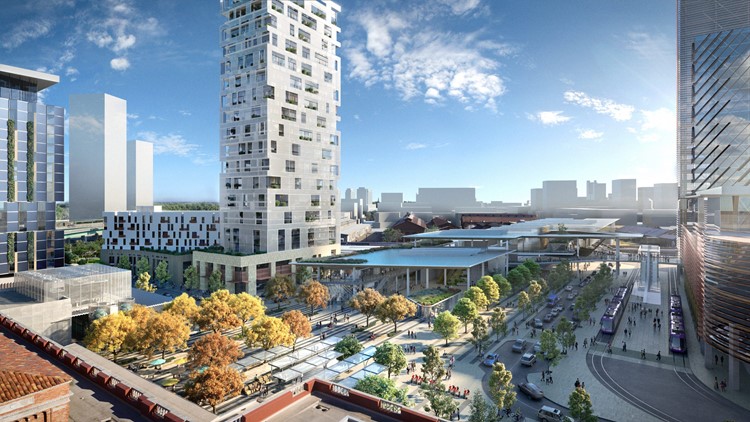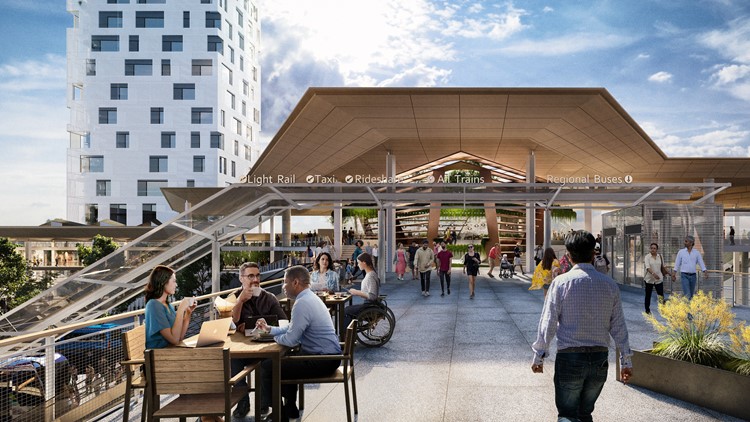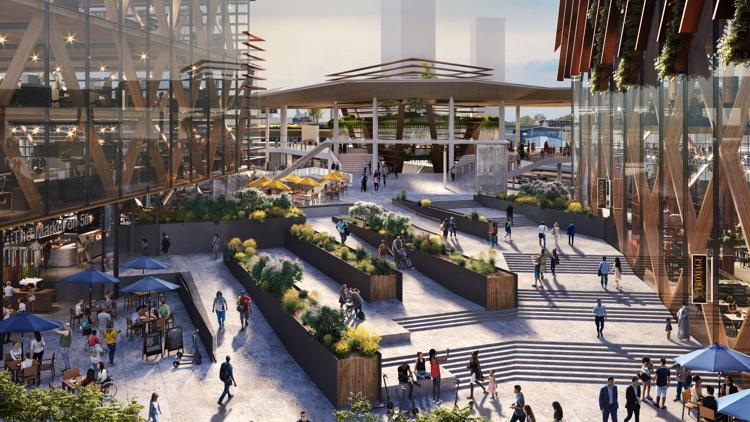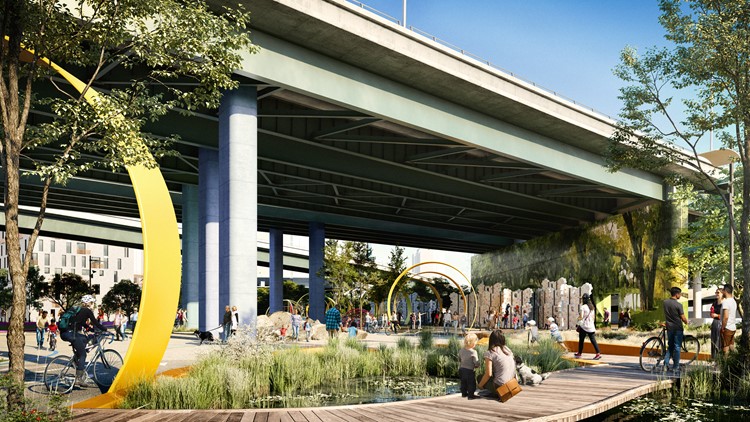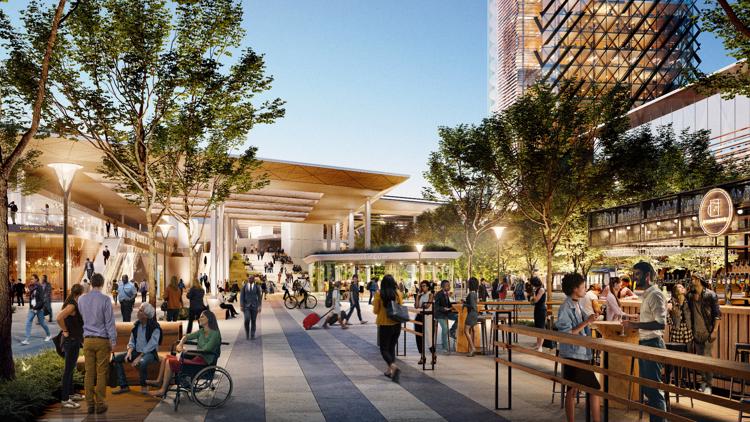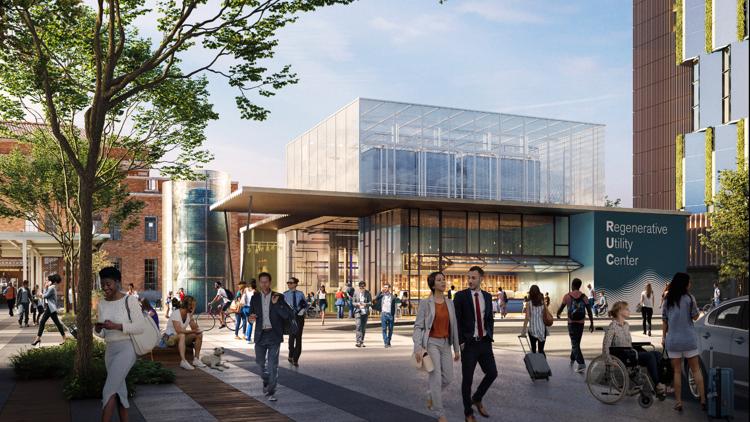SACRAMENTO, Calif. — Thirty one acres of land surround the Sacramento Valley Historic Train Depot, and if the city of Sacramento has its way, that land could change the way people experience travel and the city itself.
Nestled near downtown Sacramento, Old Sacramento, the riverfront, and railyards, the land around the historic depot is about to go through a transformational process. It's a transformation where the concepts of traveling, working, living, playing and learning come together and establishes the depot as a gateway into the city for both residents and travelers.
When Gregory Taylor, project manager for the Sacramento Valley Station Plan, looks at the site, he sees far more than a train station in the future.
“That is its principal purpose, but it’s more than that,” he said. “It’s a community of residents and folks that are journeying through Sacramento that’ll provide a destination, a living space for residents, short-term stay for people staying at the hotel and visiting Sacramento as well as office users. So, it’s really going to be a full community as well as ample park space and recreation...”
At its core, the Sacramento Valley Station Plan incorporates the historic station and creates a multi-modal hub for transportation. That means intuitive access to light rail, buses, trains, walking paths and biking paths.
“This is all geared to work together for a whole kind of societal change of trying to move from the sole dependence on automobiles, to give people a choice of other ways that are efficient and valuable for their lives to move around the state and their country,” Taylor said.
Perkins&Will, an architecture and design service behind the project, said that, while there are already transit services at the station, those services are disconnected and aren’t as efficient as they could be. That's where they come in.
If it all goes to plan, it could mean a transition away from cars and towards transit simply because that’s what people would prefer to do.
Geeti Silwal, an urban designer for Perkins&Will, believes people should be able to move around in transit services as flexibly and as efficiently as they can in their own vehicle. That's part of what the vision for the Sacramento Valley Station Plan was based on, thinking of a place where people and not cars came first.
“It makes transit and alternative modes of travel a default choice for people. It makes it a lifestyle for people to kind of move away from cars,” she said.
Transit is at the core of the plan. The station is a gateway into and out of the city for tourists, business visits, and even locals. The area already has the train station and some retail and food options, but, according to Taylor, it’s a blank slate and the ambitions go far beyond just transit.
One of the big highlights is how the area will be designed to do more good to the environment than harm, according to Taylor.
He said buildings at the site will generate more renewable energy than they actually use and recycle the water used at the site. In early April, the plan earned the Living Community Challenge Vision Plan Certification, a prestigious certification for environmental innovation.
“We’re the first municipality, first city, in the world to meet this high bar… It’s quite a big deal. Other universities and other organizations have met this bar, but we’re the first public municipality to do that,” Taylor said.
Plans are also in place for market-rate and affordable housing, office space, a hotel, community spaces, shops, restaurants, bike trails and pedestrian plazas as well. The overall goal is to make the station a destination location of its own.
“That’s why we have a plan which really infuses ideas of farm to table, kind of promotes urban agriculture, farmers market,” Silwal said. “It’s kind of a stage for showcasing the values of Sacramento, but at the same time, it’s about what the fundamental identity and values Sacramento city is getting behind.”
“It’s a pretty rich offering for the city of Sacramento. It’s definitely going to be an attraction and destination in and of itself,” she added.
Taylor said the next steps are planned for 2026 with the addition of the bus station, which could see up to 20 different agencies passing through the area.

